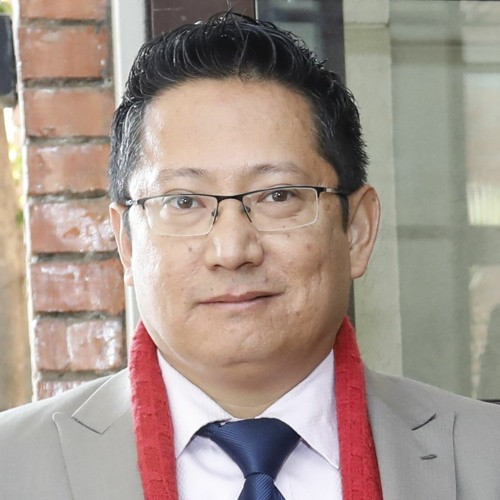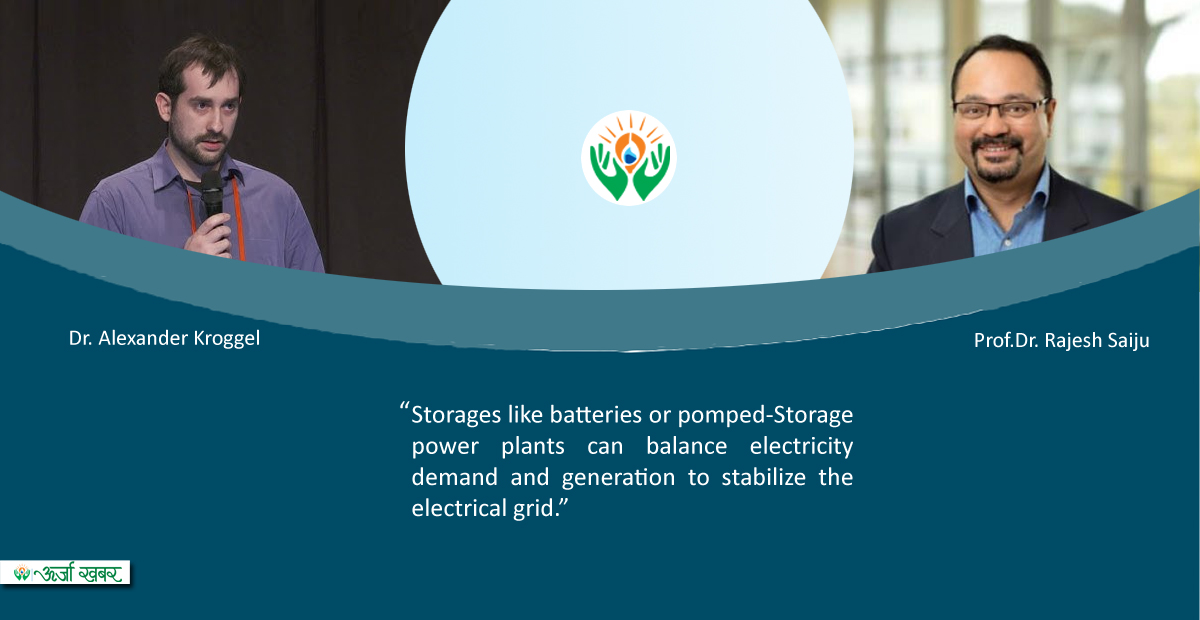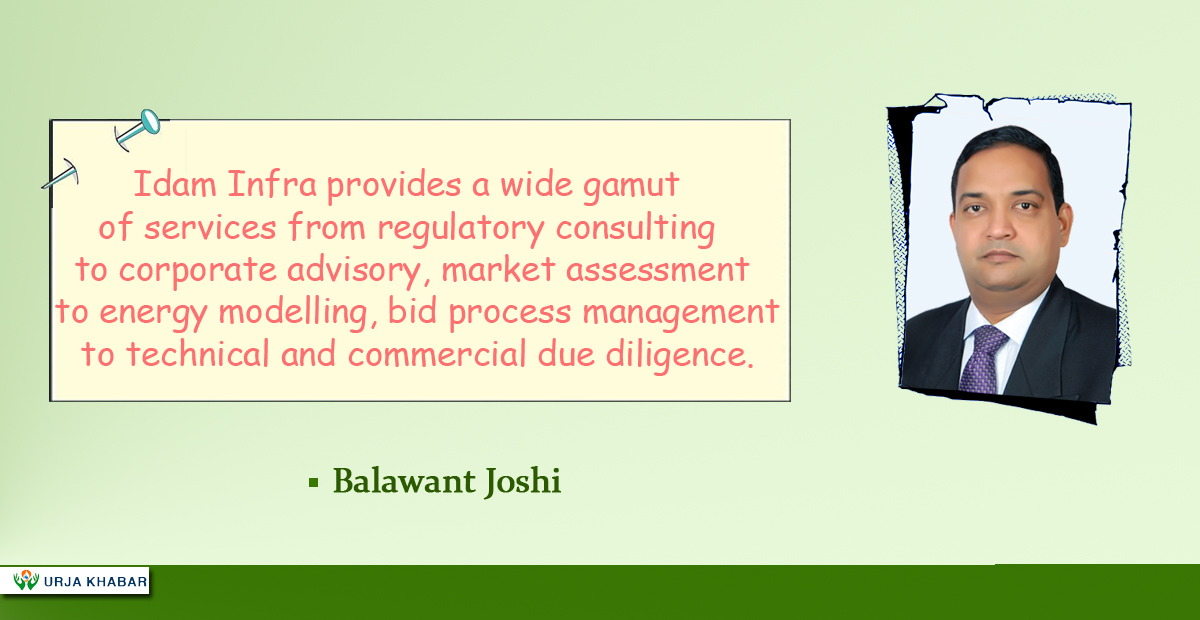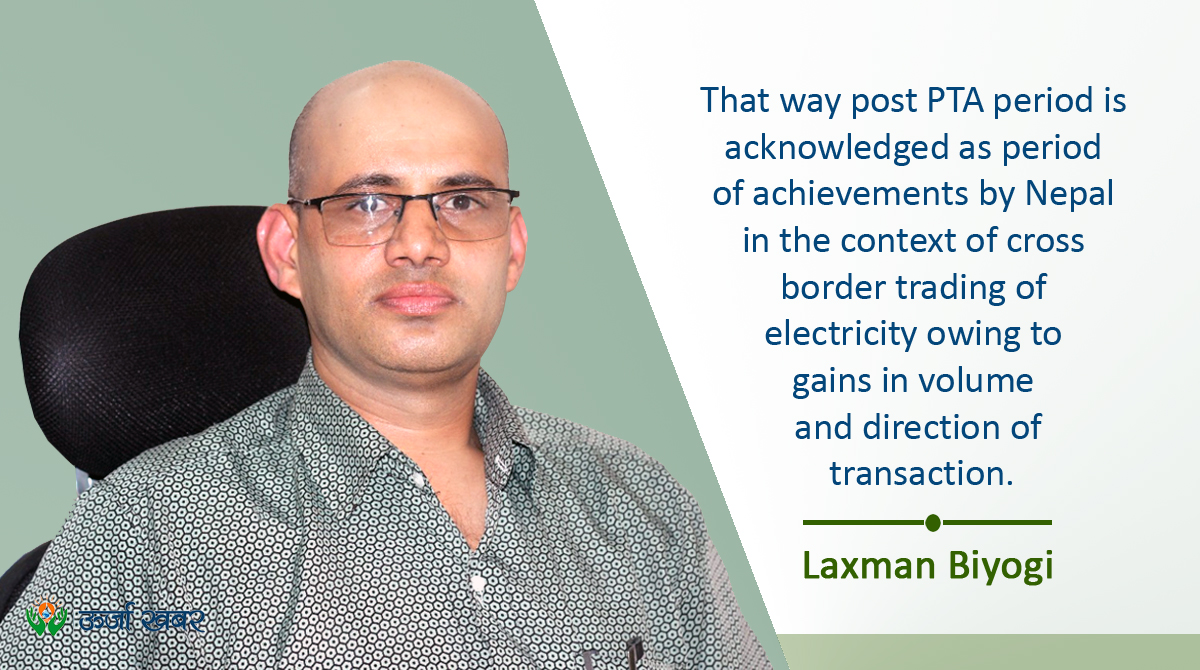Energy Update
Future proofing Nepal’s energy sector
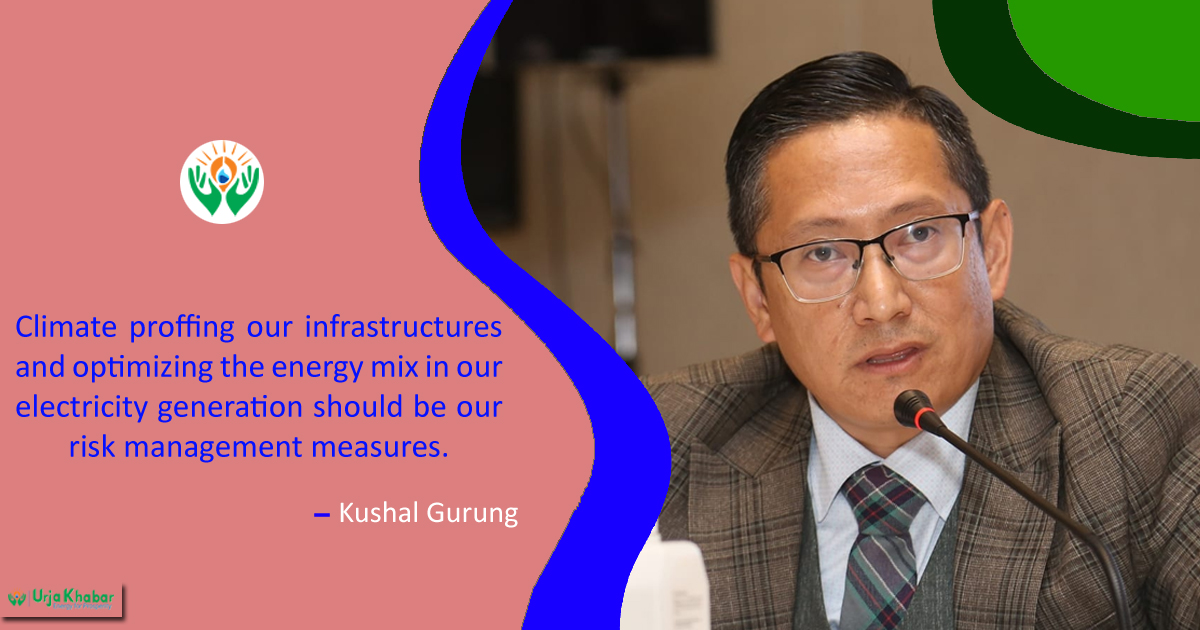
Nepal’s energy sector has witnessed a major shift in recent years, as the country gradually comes out from the electricity crisis to the electricity surplus era. Until May 2018, when the Nepal Electricity Authority (NEA) officially announced the end of load shedding in Nepal, we were suffering from an acute power outage for up to 18 hours. Fast forward, coming to October 2022, NEA had a new headache, as it had to spill almost 800 MW of electricity during the Dashain festival1.
The country, with almost 30 million of the population, has already panicked about potential electricity spill conditions, though we have not even reached 3,000 MW of installed capacity. And with over 6,400 MW power purchase agreement (PPA) signed projects, which are expected to come online for commercial operation by 2026, it is going to be a nightmare if we cannot generate demand adequate to consume all the produced electricity. To make the matter worse, since at least 90 percent of these projects are hydropower based, the future looks even more perilous because of the growing impact of climate change on the Himalayas. Hence, not only do we need to find an adequate demand for our electricity, but we must also make our energy sector more resilient to withstand climate-related shocks.

Increasing electricity consumption
Almost 95 percent of the population now have access to electricity, nonetheless, our per capita electricity consumption is merely 350 kWh. Electricity contributes to less than 10 percent of the total energy consumption. We still rely heavily on traditional sources of energy like firewood, agriculture residue and animal waste that contribute over 65 percent of total energy consumption2. Hence, low-hanging fruits are to replace fossil fuel use with electricity, especially in the cooking and transportation sectors.

E-cooking
As per the latest census, merely 0.5 percent of households use electricity for cooking. While most population uses firewood for cooking, we also spend a hefty sum to import Liquefied Petroleum Gas (LPG). We spent around Rs 65.55 billion in the last fiscal year alone on LPG imports. Though our Sustainable Development Goals (SDG) target set in 2015 was to limit the use of LPG to below 40 percent of households by 2030, rather than arresting the growth. We have already surpassed the limit halfway before the deadline, as the census shows that 44.3 percent of households are using LPG for cooking. We are so addicted to LPG that our import skyrocketed by 81.31 percent, as we imported 535,865 tons of LPG last year compared to 477,422 tons in the previous fiscal year3.
There is a great opportunity to substitute LPG consumption, at least in the urban area, with electric cooking. An assessment conducted by Modern Energy Cooking Services (MECS), also ranked Nepal 2nd among the 130 countries for e-cooking scale up viability4. In the second nationally determined contribution (NDC) submitted to UNFCCC in 2020, our government has set a target to have e-cooking in 25 percent of the households5. As per the census, the total number of conventional (non-institutional) households in 2021 is 6,660,8416. Alternative Energy Promotion Center (AEPC) has already secured a Green Climate Fund project to supply 500,000 units of e-cooking stoves in 22 districts in the next five year7.
Albeit being a commendable plan, it only covers 7.5% of the total households. Hence, if we are committed to meeting our goal of penetrating 25 percent of households, then we have to do more. However, infrastructure could become a bottleneck to meet this target. Of the 5.32 million consumers of NEA, almost 48 percent have only 5 Amp meter8. Without upgrading them to a higher amp meter, it would be very difficult for e-cooking to become our dominant cooking solution.
E-transportation
In the transportation sector, there is a growing popularity for Electric Vehicle (EV), which can be seen by the increased import of EVs, which was 60.95 percent in the first seven months of the current fiscal year, compared to the same period a year ago9. The NEA also considers EV a better opportunity, as it doesn’t put additional pressure on its overloaded peak load if the charging is done during non-peak hours. The state-owned public utility has already started investing in charging stations. Construction is underway to build 52 units of 142 kW EV fast charging stations in 33 locations spread throughout the country. Likewise, many EV dealers have set up their own charging stations for their customers too. However, so far the EV momentum has only caught the private vehicles. It has yet to woo public transportation. Unfair prioritization of the government policy skewed toward private vehicles has been blamed for this disparity. Nonetheless, we have set a national target to have 60 percent of all four-wheeler public passenger vehicle sales be EV by 203010. Like LPG, we also import sheer amount of diesel and petrol every year. In the last fiscal year, we imported diesel worth Rs 168.23 billion and petrol worth Rs 71.39 billion. Replacing them with electricity will not only reduce our import, but will also reduce our carbon emissions and help us achieve our target to become net zero emissions by 2045.11
Export
There is undeniable potential for exporting electricity to our power-hungry neighbors, especially India and Bangladesh. Nepal is the first country in South Asia to take part in the Indian Energy Exchange (IEE). Last fiscal year, the NEA exported 493 GWh of electricity, compared to just 38 GWh the year before. Though the progress is commendable, we still imported more from India than we exported, as we ended up importing 1,543 GWh. However, it was 45 percent less than that of the fiscal year 2020/21. As of now, Nepal has got a concurrence from the Government of India to export around 364 MW of power from six hydropower projects, which NEA has been exporting through the 400 kV Dhalkebar-Muzaffarpur transmission line. More transmission lines are being planned to export around 13,200 MW of power to India and China. However, much will rely on geopolitics to make the cross-border transmission happen. Even before that, there is another challenge to manage local politics to get the right of way to lay transmission lines within the country. We are running against time though, as NEA has projected an electricity surplus of 3,036 GWh for this fiscal year alone, with a projection of 19,175 GWh by 2026/27.
Green Hydrogen
Nepal could also use surplus electricity to produce green hydrogen that can be further processed to produce chemical fertilizers like ammonia and urea. Nepal imports a significant amount of chemical fertilizer- around 800,000 metric tons annually, costing the government around Rs 22.4 billion12. To make the cost of Urea more affordable to farmers, the government provides a subsidy of Rs 15 per kg, which represents an 86.6 percent discount13. While this measure increased the affordability of farmers, it has also led to a high trade deficit and puts pressure on the government's foreign exchange reserves. Green hydrogen production could address these issues by facilitating energy-intensive and hard-to-decarbonize sectors such as industry and transportation, and subsequently producing ammonia-based fertilizers. A study conducted by Investment Board Nepal (IBN) showed that we need around 10,800 MWh of dedicated and uninterrupted electricity daily (i.e. around 450 MW size project) to produce 700,000 tons of chemical fertilizer annually14. But the report also deems water electrolysis technology (Green Hydrogen based option) comparatively more expensive than a natural gas option, at current electricity tariff of Rs 8.16 per KWh, thus recommends to lower the electricity tariff to Rs 3 per KWh to make the Green Hydrogen to Urea project commercially viable.
Climate Change
As per the latest IPCC report published in 2022, there is a high confidence that temperature warming is expected to increase up to 2°C by 2050 in the Himalayas15, which could result in irreversible glacier melt that could affect the hydrological system of the region and lead to extreme flooding and Glacier lake outburst flood (GLOF) that could severely damage our hydropower projects. Nepal had already lost 24 percent of its glacier between 1980 and 201016, and the one study even warns that in the case of business-as-usual carbon emissions, global temperature could increase by 5°C that could wipe out two-thirds of the Hindu Kush Himalaya glaciers by 210017. Hence, it is very important for all hydropower project developers to conduct climate risk assessments and take necessary measures to protect their hydro projects from the potential impact of climate change.
Energy mix
Moreover, it would be wise not to put all eggs in a single basket but to diversify the energy generation source by optimizing the energy mix as much as possible as a risk management measure. The current policy only allows up to 10 percent of electricity can connect to the national grid from other renewables, viz wind, solar and bio-energy. Arguably, with such a huge potential for hydropower and being one of the cheapest sources of electricity, it seems economical to allocate 90 percent of the grid for hydroelectricity. But, with risks of climate change becoming prominent and imminent, we must add more non-hydro renewables to the grid. We have to upgrade our grid to make it robust to accommodate as much of intermittent renewable energy sources including solar and wind. In 2021, Denmark had 48.6 percent wind and 4.2 percent solar in its electricity generation, proving the technical viability of intermittent sources18. Hence, we should aim to maximize the energy mix in our grid to minimize the risk of climate change.
We should also prioritize the replacement of coal with biomass fuel, which is a cleaner alternative that can reduce greenhouse gas emissions and improve air quality in Nepal. Forest occupies roughly 44 percent of Nepal’s land mass, which provides around 1,159.65 million tons of above-ground air-dried biomass19 that could be used to produce biomass briquettes and pellets. Using the forest litter could also minimize the risk of forest fires during the dry seasons.
There is also a possibility for Waste-to-Energy especially from the municipal solid waste and from animal manure and chicken litter. As per the report unveiled by the previous Central Bureau of Statistics, 276 municipalities of Nepal generate 746,282 metric tons of solid waste annually, of which around 39 percent is organic20. Likewise, we have over 13 million cows and buffaloes and more than 11 million of laying hens21. Using 20 percent of organic wastes from these sources could easily replace 60 percent of the LPG import.
Off-grid electrification
Regardless of how much electricity surplus we may have; we are still going to have some households that will be off the grid because of the rough terrain and remoteness. Gesto report predicts that at least one percent of the households in Nepal will always be permanently off-grid22. As per the Constitution of Nepal 2015, local governments have the mandates for renewable energy projects. AEPC should collaborate with LGs and build their capacity to implement off-grid electrification projects. We need to engage both private sector and civil society organizations to build, own and operate solar mini-grids and micro-hydro projects using Renewable Energy Service Company (RESCO) model to channel additional investments for scaling up renewable energy projects.
Conclusion
Renewable energy is crucial for Nepal's promised sustainable development goals and to achieve our commitment to become net zero emissions by 2045. We must invest in cross-border transmission lines and upgrade our distribution systems, as well as come up with various incentive schemes such as favorable electricity tariff rates and capital subsidies to shift our energy consumption to electricity consumption. We should aim at increasing per capita electricity consumption to 1,500 kWh by 2030. However, we have to tread carefully, considering the potential impact of climate change in the Himalayas. Climate proofing our infrastructures and optimizing the energy mix in our electricity generation should be our risk management measures.
Mr. Gurung is senior Energy Expert
This article is taken from Urja Khabar bi-annual Journal Publish on 16th June, 2023
Citation
1)https://kathmandupost.com/national/2022/10/10/nepal-loses-rs200-million-in-dashain-power-spillage
2) WECS. (2022). Nepal Energy Sector Synopsis Report-2022.
3)https://kathmandupost.com/money/2023/04/30/nepal-undermining-hydropower-as-it-seeks-to-ease-fuel-imports-experts-say
4) https://mecs.org.uk/resources/factsheets/factsheets-bangladesh-india-nepal-srilanka/
5)https://climate.mohp.gov.np/30-manuals/167-second-nationally-determined-contribution-ndc-gon-2020
6) https://censusnepal.cbs.gov.np/results/downloads/national
7) https://www.greenclimate.fund/project/fp172
8) Nepal Electricity Authority, annual report 2021/22 https://www.nea.org.np/annual_report
9) https://kathmandupost.com/money/2023/02/23/nepalis-turning-to-electric-vehicles-evs-in-tactical-shift-imports-jump-61-percent
10)ttps://climate.mohp.gov.np/30-manuals/167-second-nationally-determined-contribution-ndc-gon-2020
11)Nepal's Long-term Strategy for Net-zero Emissions https://unfccc.int/documents/307963
12) https://www.mof.gov.np/uploads/document/file/1674635120_Economic_Survey_2022.pdf
13)https://ibn.gov.np/wp-content/uploads/2022/03/Summary-Report_chemical-fertilizer_2021-1.pdf
14) IBN report https://ibn.gov.np/wp-content/uploads/2022/03/Summary-Report_chemical-fertilizer_2021-1.pdf
15) IPCC Sixth Assessment Report https://www.ipcc.ch/report/ar6/wg2/
16) Bajracharya, S.R., et al., 2014: Glacier status in Nepal and decadal change from 1980 to 2010 based on Landsat data. International Centre for Integrated Mountain Development, ISBN 978-9291153114.
17)https://www.icimod.org/landmark-study-two-degree-temperature-rise-could-melt-half-of-glaciers-in-hindu-kush-himalaya-region-destabilizing-asias-rivers/
18)Denmark electricity mix 2021 https://www.statista.com/statistics/1235360/denmark-distribution-of-electricity-production-by-source/
19) THE INDUSTRIALISATION OF FOREST-BASED BIOENERGY PRODUCTION IN NEPAL AND ITS IMPACTS ON WOMEN AND OTHER FOREST-DEPENDENT PEOPLES https://globalforestcoalition.org/wp-content/uploads/2022/10/Informe_nepal_4.pdf
20) https://cbs.gov.np/solid-waste-account-for-urban-municipalities-of-nepal2022/
21) STATISTICAL INFORMATION ON NEPALESE AGRICULTURE 2077/78 (2020/21) https://moald.gov.np/wp-content/uploads/2022/07/STATISTICAL-INFORMATION-ON-NEPALESE-AGRICULTURE-2077-78.pdf
22) Gesto Energy. (2020). Distribution System/Rural Electrification Master Plan Nepal.
Conversation
- Info. Dept. Reg. No. : 254/073/74
- Telephone : +977-1-5321303
- Email : [email protected]




